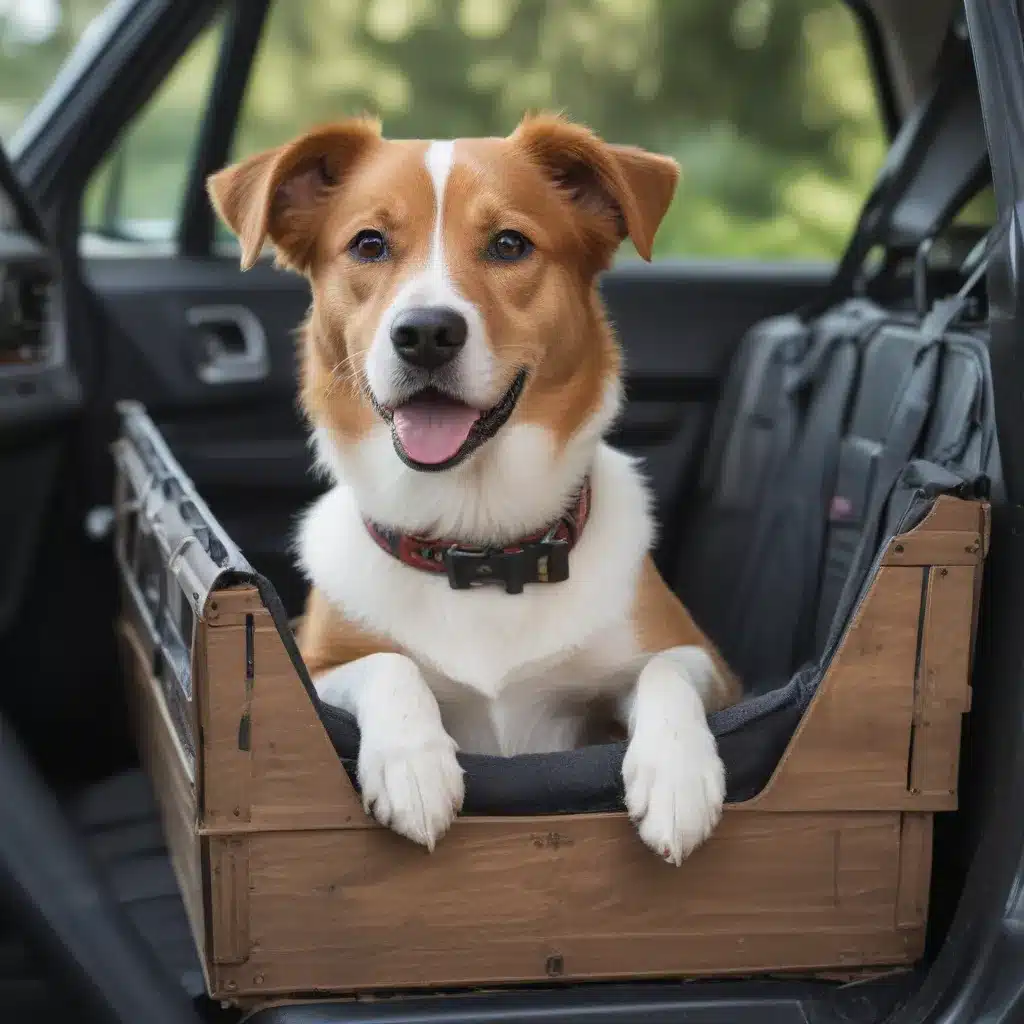
Buckle Up, Fido! The Scoop on Keeping Your Pup Safe in the Car
As a dog owner, I know the struggle all too well. You want to bring your furry best friend along for the ride, but keeping them secure and safe in the car can be tricky. Do you use a crate? A harness? Strap them in with a seatbelt? The options are endless, and the stakes are high. After all, we can’t exactly equip our pups with airbags and crumple zones like we humans get.
Well, fellow dog parents, I’m here to share my hard-earned wisdom on car safety for our canine companions. From personal experiences (both good and, well, not-so-good) to expert insights, I’ll dive deep into the pros and cons of various dog transportation methods. By the end of this article, you’ll be a veritable dog chauffeur, ready to navigate the open road with your furry co-pilot in tow.
Understanding the Physics of Pup-Powered Projectiles
Let’s start with a little science lesson, shall we? When it comes to car safety for dogs, it all comes down to one simple concept: inertia. That’s the tendency for an object to keep moving at the same speed, even when the vehicle around it stops suddenly. In other words, your pup could become a four-legged missile if they’re not properly secured.
Imagine your dog is sitting in the passenger seat, happily gazing out the window. Then, BAM! You have to slam on the brakes to avoid hitting a squirrel (or, you know, another car). Your canine companion, unrestrained, continues moving at the speed the car was traveling, potentially slamming into the dashboard, the windshield, or even you. Ouch!
That’s where seatbelts, harnesses, and crates come into play. These devices work to keep your dog’s body firmly attached to the vehicle, either by restraining them directly or containing them in a secure enclosure. And trust me, you’d much rather have your pup bouncing around in a sturdy crate than becoming a projectile in an accident.
The Great Crate Debate
So, which is the safest option for transporting your pooch – a crate or a harness? Well, my friends, the answer isn’t as straightforward as you might think. It really depends on the size and behavior of your individual dog, as well as the specific setup of your vehicle.
Let’s start with crates. These enclosed spaces can be a godsend for keeping your dog contained and secure during a ride. The key is to choose a crate that’s properly sized for your pup, with solid walls rather than flimsy wire mesh. That way, if the unthinkable happens and your car is in an accident, the crate itself won’t become a hazard, crushing or cutting your dog.
PetMD recommends crates that are “crash-tested and designed to withstand the forces of a collision.” And don’t forget to secure the crate itself to the vehicle, so it doesn’t become a projectile in its own right.
On the other hand, harnesses offer a bit more freedom of movement for your dog, while still keeping them tethered to the car. The idea is that the harness will spread the force of a sudden stop or impact across your pup’s body, rather than concentrating it at a single point (like their neck, for example).
But as one Pets Stack Exchange user points out, even with a harness, there’s still the risk of “whiplash” – that jarring motion where the head and body move independently. Ouch, again!
Ultimately, it seems that a properly secured crate may be the safest option, especially for larger or more rambunctious dogs. But for smaller pups who enjoy snuggling up next to you, a well-fitted harness could be a reasonable compromise. The best approach? Consult your veterinarian or a certified canine behaviorist to determine the right solution for your furry friend.
The Whole Dog Journal Weighs In
Speaking of experts, I recently stumbled upon an article in Whole Dog Journal that sheds some additional light on this topic. The author, a self-proclaimed occasional “careless” dog owner, admits that she doesn’t always use crates or seatbelts for short trips – but learned her lesson after a recent vet visit with all five of her pups.
“Other than Bonnie’s panting, it was an experience in car-ride serenity, and I vowed to crate everyone, always, on future rides,” she writes. The article goes on to highlight the importance of keeping your dog secure, whether through a crate, harness, or other method, to prevent them from becoming a hazard in the event of an accident.
The author also touches on the emotional aspect of dog car rides, noting that some owners may be hesitant to crate their pups if it means they can’t cuddle and snuggle during the journey. But as she rightly points out, “safety first” should be the top priority. After all, what good is a snuggle sesh if your furry friend isn’t around to enjoy it?
Bringing it All Together
So, there you have it, fellow dog owners – the lowdown on keeping your pup safe and secure in the car. Whether you opt for a sturdy crate, a well-fitted harness, or a combination of both, the key is to prioritize their safety above all else.
And if you’re still feeling unsure about the best approach, I Have Dogs is a great resource to explore. Their team of experts can provide personalized guidance and recommendations to help you make the right choice for your canine co-pilot.
Remember, our furry friends are counting on us to keep them safe, even when we’re on the road. So let’s ditch the loose-cannon approach and embrace the power of crates, seatbelts, and responsible pet parenting. After all, who needs airbags when you’ve got a well-secured Fido by your side?

